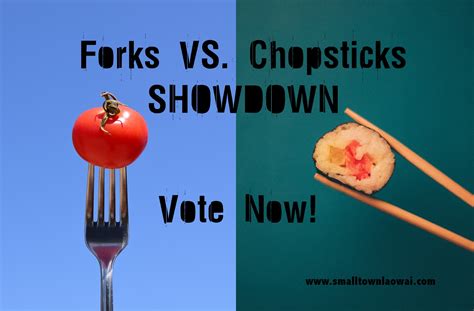
Navigating a Chinese restaurant menu can be a health minefield, with dishes ranging from nutritious to detrimental to your well-being. While favorites like steamed vegetables and certain soups offer health benefits, others such as General Tso’s Chicken and Crab Rangoon pack excessive calories, sodium, and unhealthy fats, potentially derailing health goals.
Choosing wisely when ordering Chinese food can significantly impact your overall health. Registered dietitians reveal some of the healthiest and unhealthiest options available, providing guidance for making informed decisions.
Healthiest Choices
1. Steamed Vegetables: A cornerstone of a healthy diet, steamed vegetables are a nutritional powerhouse, low in calories and rich in vitamins, minerals, and fiber. According to registered dietitians, opting for steamed vegetables without heavy sauces is a simple yet effective way to boost your nutrient intake. “Steamed vegetables are always a safe and healthy choice,” notes one dietitian. These can include broccoli, carrots, snow peas, and bok choy.
2. Hot and Sour Soup: This soup is often a lighter choice compared to cream-based or fried options. The broth is typically low in calories, and the addition of vegetables like bamboo shoots, mushrooms, and tofu provides essential nutrients. “Hot and sour soup can be a flavorful and relatively low-calorie appetizer,” experts suggest. However, be mindful of the sodium content, as some restaurants may add excessive amounts of salt.
3. Chicken and Vegetable Stir-Fry: A balanced combination of lean protein and vegetables makes this stir-fry a healthier choice. Chicken provides essential amino acids, while the vegetables contribute vitamins, minerals, and fiber. Opting for a light sauce or asking for the sauce on the side allows you to control the sodium and sugar content. “A chicken and vegetable stir-fry offers a good balance of protein and nutrients,” a dietitian confirms.
4. Brown Rice: Swapping white rice for brown rice is a significant upgrade in terms of nutritional value. Brown rice is a whole grain, meaning it retains the bran and germ, which are rich in fiber, vitamins, and minerals. Fiber aids in digestion, helps regulate blood sugar levels, and promotes feelings of fullness. “Brown rice is a much healthier alternative to white rice due to its higher fiber content,” nutritionists advise.
5. Shrimp with Lobster Sauce: Despite its rich-sounding name, Shrimp with Lobster Sauce is often a healthier option than many other saucy dishes. The sauce is typically made with a light broth, ginger, and garlic, providing flavor without excessive calories or fat. Shrimp is a lean protein source, offering essential nutrients without contributing to high cholesterol levels. “Shrimp with Lobster Sauce can be a surprisingly light and healthy choice,” experts say, but be cautious of added sodium.
6. Buddha’s Delight (Lo Han Jai): This vegetarian dish features a variety of vegetables and tofu, offering a wealth of nutrients and fiber. The absence of meat makes it lower in saturated fat and cholesterol. “Buddha’s Delight is a great option for vegetarians and anyone looking for a nutrient-rich, low-fat meal,” dietitians recommend.
7. Moo Goo Gai Pan: This classic dish features sliced chicken and mushrooms in a light, savory sauce. The emphasis on lean protein and vegetables makes it a healthier option. “Moo Goo Gai Pan is a relatively light and balanced dish,” experts note. Be sure to ask for the sauce on the side to control the amount you consume.
8. Egg Drop Soup: Egg drop soup is another relatively low-calorie and hydrating option. The broth base is typically light, and the addition of eggs provides a small amount of protein. “Egg drop soup is a comforting and relatively healthy starter,” dietitians suggest. However, be mindful of the sodium content.
Unhealthiest Choices
1. General Tso’s Chicken: This popular dish is a prime example of how Chinese food can be deceiving. General Tso’s Chicken is typically deep-fried and coated in a sugary, high-sodium sauce. “General Tso’s Chicken is one of the worst choices on the menu due to its high calorie, fat, and sugar content,” experts warn. The breading and frying process significantly increase the calorie count, while the sauce contributes to excessive sugar and sodium intake.
2. Crab Rangoon: These crispy, cream cheese-filled wontons are a common appetizer but are also a significant source of unhealthy fats and calories. The cream cheese filling is high in saturated fat, and the deep-frying process adds even more fat. “Crab Rangoon is essentially a fried cream cheese bomb,” dietitians explain.
3. Egg Rolls: Similar to Crab Rangoon, egg rolls are deep-fried and filled with a mixture of vegetables and sometimes meat. The deep-frying process contributes to a high calorie and fat content. “Egg rolls are often loaded with unhealthy fats and calories,” experts note. Opting for spring rolls, which are typically not fried, can be a slightly healthier alternative.
4. Beef and Broccoli: While it contains vegetables, Beef and Broccoli is often loaded with a sugary, high-sodium sauce. The beef is also often of lower quality and high in fat. “Beef and Broccoli can be deceptively unhealthy due to the sauce and the type of beef used,” nutritionists advise.
5. Sweet and Sour Chicken: This dish is similar to General Tso’s Chicken in that it is deep-fried and coated in a sugary sauce. The combination of frying and sugary sauce makes it a high-calorie and high-sugar option. “Sweet and Sour Chicken is another dish to avoid due to its high sugar and calorie content,” dietitians recommend.
6. Lo Mein: While noodles themselves aren’t inherently unhealthy, Lo Mein is often prepared with excessive amounts of oil and sodium. The noodles are typically stir-fried with a heavy sauce, contributing to a high calorie and fat content. “Lo Mein can be a calorie and sodium bomb depending on how it’s prepared,” experts warn.
7. Fried Rice: Fried rice is often loaded with oil, sodium, and hidden calories. The rice is typically stir-fried with eggs, vegetables, and meat, but the added oil and sodium can make it an unhealthy choice. “Fried rice is often much higher in calories and fat than plain rice,” dietitians explain.
FAQ: Navigating Chinese Restaurant Menus for Healthier Choices
Q1: What is the single most important thing to consider when ordering Chinese food to make it healthier?
A: The most crucial factor is the preparation method and the sauce. Opt for steamed, grilled, or stir-fried dishes with light sauces or sauces on the side. Avoid deep-fried options and dishes with heavy, sugary sauces. According to registered dietitians, controlling the sauce intake significantly reduces calorie, sugar, and sodium consumption.
Q2: Are there any specific questions I should ask the restaurant staff when ordering to ensure I’m making a healthy choice?
A: Yes, ask about the ingredients used in the sauce, the cooking methods employed, and whether they can prepare the dish with less oil or sodium. Requesting steamed vegetables with sauce on the side is always a good option. You could also inquire about the type of oil used for cooking. “Don’t hesitate to ask about modifications to make your meal healthier,” experts advise.
Q3: How can I balance enjoying my favorite Chinese dishes while still maintaining a healthy diet?
A: Portion control is key. Enjoy smaller portions of your favorite, less healthy dishes and pair them with healthier options like steamed vegetables or brown rice. Consider sharing an unhealthy dish with a friend to reduce your individual intake. You can also try preparing healthier versions of your favorite dishes at home.
Q4: What are some healthy substitutions I can make when ordering Chinese food?
A: Substitute white rice for brown rice, fried noodles for steamed noodles, and deep-fried dishes for steamed or grilled options. Choose dishes with lean protein sources like chicken, shrimp, or tofu, and load up on vegetables. Request less sauce or sauce on the side to control your sodium and sugar intake.
Q5: Are there any specific ingredients in Chinese cuisine that I should be particularly wary of when trying to eat healthy?
A: Be cautious of high-sodium ingredients like soy sauce, MSG, and certain processed sauces. Also, be mindful of excessive amounts of oil used in stir-fries and deep-fried dishes. Sugary sauces, such as those used in General Tso’s Chicken and Sweet and Sour Chicken, should also be avoided.
Detailed Analysis of Healthiest Options
Steamed Vegetables: This option stands out for its simplicity and nutritional density. Steaming preserves the vitamins and minerals in vegetables, making them a potent source of essential nutrients. Unlike fried or sauteed vegetables, steamed vegetables avoid the addition of unhealthy fats. You can enhance their flavor with a touch of soy sauce or a sprinkle of spices. The fiber content promotes satiety and aids in digestion. Consuming steamed vegetables regularly can contribute to weight management, improved cardiovascular health, and a reduced risk of chronic diseases.
Hot and Sour Soup: The low-calorie broth base and the inclusion of vegetables like bamboo shoots and mushrooms make this soup a healthy appetizer. The spices used, such as white pepper and vinegar, can also have health benefits. White pepper has anti-inflammatory properties, while vinegar can help regulate blood sugar levels. However, the sodium content can be a concern, so it’s advisable to consume it in moderation. Homemade versions of hot and sour soup allow for better control over the sodium content.
Chicken and Vegetable Stir-Fry: This dish offers a balanced combination of protein and micronutrients. Chicken provides essential amino acids, which are crucial for building and repairing tissues. The vegetables contribute vitamins, minerals, and fiber, supporting overall health and well-being. Opting for a light sauce or asking for the sauce on the side allows for better control over the sodium and sugar content. Using lean cuts of chicken and a variety of colorful vegetables enhances the nutritional value of this dish.
Brown Rice: Brown rice is a whole grain, meaning it retains the bran and germ, which are rich in fiber, vitamins, and minerals. The fiber content helps regulate blood sugar levels, promotes feelings of fullness, and aids in digestion. Brown rice also provides essential nutrients like magnesium and selenium. Substituting white rice with brown rice can significantly improve the nutritional profile of your meal. It’s essential to ensure that the brown rice is cooked properly to achieve a palatable texture.
Shrimp with Lobster Sauce: Shrimp is a lean protein source, offering essential nutrients without contributing to high cholesterol levels. The sauce, typically made with a light broth, ginger, and garlic, provides flavor without excessive calories or fat. Ginger has anti-inflammatory properties, while garlic is known for its immune-boosting benefits. However, be cautious of added sodium in the sauce. Choosing restaurants that use fresh ingredients and prepare the sauce from scratch can enhance the nutritional value of this dish.
Buddha’s Delight (Lo Han Jai): This vegetarian dish features a variety of vegetables and tofu, offering a wealth of nutrients and fiber. The absence of meat makes it lower in saturated fat and cholesterol. Tofu is a complete protein source, providing all the essential amino acids. The variety of vegetables ensures a broad spectrum of vitamins and minerals. This dish is an excellent option for vegetarians and anyone looking for a nutrient-rich, low-fat meal.
Moo Goo Gai Pan: This classic dish features sliced chicken and mushrooms in a light, savory sauce. The emphasis on lean protein and vegetables makes it a healthier option. Mushrooms are a good source of vitamins and minerals, including vitamin D and selenium. Be sure to ask for the sauce on the side to control the amount you consume. Using fresh, high-quality ingredients can further enhance the nutritional value of this dish.
Egg Drop Soup: Egg drop soup is a relatively low-calorie and hydrating option. The broth base is typically light, and the addition of eggs provides a small amount of protein. Eggs are a good source of protein and essential nutrients, including choline and vitamin D. However, be mindful of the sodium content. Choosing restaurants that use homemade broth and avoid excessive salt can make this a healthier choice.
Detailed Analysis of Unhealthiest Options
General Tso’s Chicken: This dish is a prime example of how Chinese food can be deceiving. The deep-frying and sugary, high-sodium sauce make it one of the worst choices on the menu. The breading and frying process significantly increase the calorie count, while the sauce contributes to excessive sugar and sodium intake. Consuming General Tso’s Chicken regularly can lead to weight gain, high blood pressure, and an increased risk of type 2 diabetes.
Crab Rangoon: These crispy, cream cheese-filled wontons are a significant source of unhealthy fats and calories. The cream cheese filling is high in saturated fat, and the deep-frying process adds even more fat. Saturated fats can raise cholesterol levels and increase the risk of heart disease. The lack of nutritional value in Crab Rangoon makes it a poor choice for a healthy diet.
Egg Rolls: Similar to Crab Rangoon, egg rolls are deep-fried and filled with a mixture of vegetables and sometimes meat. The deep-frying process contributes to a high calorie and fat content. The filling often contains processed ingredients and minimal nutritional value. Opting for spring rolls, which are typically not fried, can be a slightly healthier alternative, but even spring rolls should be consumed in moderation.
Beef and Broccoli: While it contains vegetables, Beef and Broccoli is often loaded with a sugary, high-sodium sauce. The beef is also often of lower quality and high in fat. Consuming this dish regularly can contribute to weight gain, high blood pressure, and an increased risk of heart disease. Choosing lean cuts of beef and opting for a light sauce or asking for the sauce on the side can make this dish slightly healthier.
Sweet and Sour Chicken: This dish is similar to General Tso’s Chicken in that it is deep-fried and coated in a sugary sauce. The combination of frying and sugary sauce makes it a high-calorie and high-sugar option. Excessive sugar intake can lead to weight gain, insulin resistance, and an increased risk of type 2 diabetes.
Lo Mein: While noodles themselves aren’t inherently unhealthy, Lo Mein is often prepared with excessive amounts of oil and sodium. The noodles are typically stir-fried with a heavy sauce, contributing to a high calorie and fat content. The sauce often contains MSG, which can cause adverse reactions in some individuals. Opting for steamed noodles with vegetables and a light sauce can be a healthier alternative.
Fried Rice: Fried rice is often loaded with oil, sodium, and hidden calories. The rice is typically stir-fried with eggs, vegetables, and meat, but the added oil and sodium can make it an unhealthy choice. The use of processed ingredients and low-quality oil further reduces its nutritional value. Choosing brown rice and asking for it to be stir-fried with minimal oil and sodium can make it a slightly healthier option.
In conclusion, navigating Chinese restaurant menus requires careful consideration and informed choices. By opting for steamed, grilled, or stir-fried dishes with light sauces and lean protein sources, you can enjoy the flavors of Chinese cuisine while maintaining a healthy diet. Conversely, avoiding deep-fried options and dishes with heavy, sugary sauces can help you minimize your intake of calories, unhealthy fats, and sodium.









